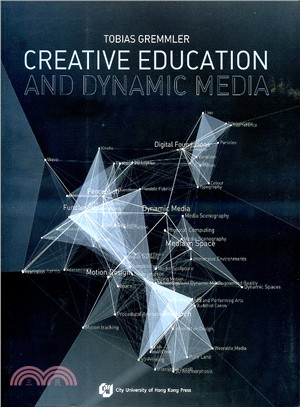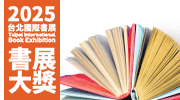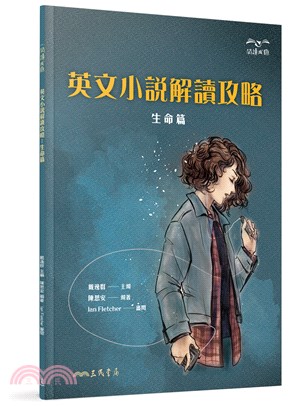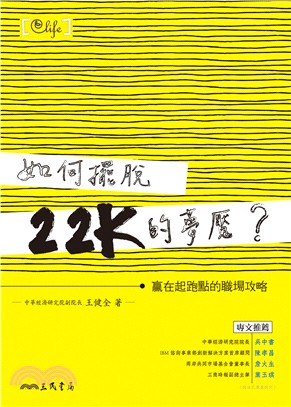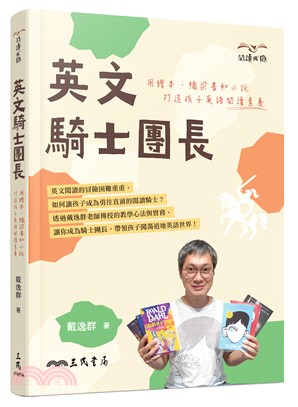Creative Education and Dynamic Media
商品資訊
ISBN13:9789629372217
出版社:香港城市大學出版社
作者:Tobias Gremmler
出版日:2014/05/01
裝訂/頁數:平裝/424頁
規格:27cm*21cm*2.2cm (高/寬/厚)
商品簡介
作者簡介
目次
書摘/試閱
相關商品
商品簡介
INTRODUCTION
The book provides guidelines and practical creative exercises which equip creative-major students in early semesters as well as creative practitioners with fundamental knowledge on creation methods.
Combination of functionality, simplicity and aesthetics in modern design is considered a fundamental design principle in the Bauhaus School in Germany,and, inspired by the School, the creative handcrafting exercises and the concepts introduced in this book are primarily coherent with this principle.
The book draws a direction between two and three dimensional material-based design and modern digital creation process. The first part of the book introduces various creative handcrafting exerciseson proportion, geometry and modularity, among other fundamental design principles. The creative exercises will sensitise students on aesthetical and structural issues, and thus serve as an essential building block for application of the design principles to computer-based creative processes, which are introduced in the second part of the book.
The book provides guidelines and practical creative exercises which equip creative-major students in early semesters as well as creative practitioners with fundamental knowledge on creation methods.
Combination of functionality, simplicity and aesthetics in modern design is considered a fundamental design principle in the Bauhaus School in Germany,and, inspired by the School, the creative handcrafting exercises and the concepts introduced in this book are primarily coherent with this principle.
The book draws a direction between two and three dimensional material-based design and modern digital creation process. The first part of the book introduces various creative handcrafting exerciseson proportion, geometry and modularity, among other fundamental design principles. The creative exercises will sensitise students on aesthetical and structural issues, and thus serve as an essential building block for application of the design principles to computer-based creative processes, which are introduced in the second part of the book.
作者簡介
THE AUTHOR
Tobias Gremmler is currently Visiting Associate Professor at the School of Creative Media, City University Hong Kong and Visiting Professor at the Shanghai Theatre Academy. He has taught at universities in Germany, Switzerland and the United States since 1996,and began teaching in China since 2003.
He started his career as a professional designer for digital in 1991.Since then, he has developed design solutions for companies such as Apple, Adidas, BMW, Samsung and Sony. In his artistic work, he blends media art with traditional art forms like theatre, music and Sculpture. His artwork had been shown at Ars Electronica, Transmediale, and theatre like Volksbuhne Berlin and Cultural Centre Hong Kong.
Tobias Gremmler is currently Visiting Associate Professor at the School of Creative Media, City University Hong Kong and Visiting Professor at the Shanghai Theatre Academy. He has taught at universities in Germany, Switzerland and the United States since 1996,and began teaching in China since 2003.
He started his career as a professional designer for digital in 1991.Since then, he has developed design solutions for companies such as Apple, Adidas, BMW, Samsung and Sony. In his artistic work, he blends media art with traditional art forms like theatre, music and Sculpture. His artwork had been shown at Ars Electronica, Transmediale, and theatre like Volksbuhne Berlin and Cultural Centre Hong Kong.
目次
TABLE OF CONTENTS
1. Perception
2. Fundamentals
3. Digital Foundations
4. Motion Design
5. Media In Space
6. Research
1. Perception
2. Fundamentals
3. Digital Foundations
4. Motion Design
5. Media In Space
6. Research
書摘/試閱
PREFACE
The purpose of this book is to provide guidelines and practical examples for teachers and students in early semesters in design, architecture, art and fashion faculties as well as creative training institutes. The exercises described in this book aim to equip students with fundamental knowledge on creation methods which serve as essential building blocks for their later studies. The book introduces 38 modules of different creative exercises including proportion, composition, geometry, form, modularity,generative design, colour, typography and transformation. In addition, a selection of creative projects by more advanced students and professionals demonstrates the successful application of fundamental design principles and methods.
The book is conceived in three parts. The creative handcrafting exercises in the first part of this book(chapters 1 and 2) sensitise students to aesthetic and structural issues and anticipate the computerbased creation methods of the second part (chapters 3–5). In the third part, chapter 6 illustrates how research praxis can inform teaching practices andis developed from collaborative research driven by real-world projects (Research) and my own research endeavours (Lab).
Each module incorporated in chapters 1–3 follows a systematic structure and arrangement, including a description that introduces the process, the materials and the expected learning effects. The exercises in each module can be finished within one hour and require minimal pre-existing artistic or creative skills. The steps and outcomes of the exercises asthey were taught in my classes are illustrated with authentic photographs from students’ work. Each module is designed so it can be modified or changed according to the individual preferences of teachers(and also by students!).
The foundation modules in the first three chapters of this book are based on my wide ranging expertise covering most of the disciplines that design students have to face in their subsequent studies. In response to the perceived needs of students, the modules in the first two chapters of this book are process oriented. Chapter 1, Perception, opens witha discussion and set of exercises on perception and interpretation. The second chapter, Fundamentals, explores 2D and 3D structures. The materials (i.e. paper, wooden rods and fabrics) used in these two chapters are simple, low-cost and effective teaching tools. Each material represents certain structural and aesthetic qualities such as transparency, flexibility or modularity. Explorations of these qualities are an essential part of the intention of the learningmodules. In addition, in response to contemporary design challenges, I incorporate dynamic and timebasedaspects in the learning modules at an early stage, starting with chapter 2. The assignments introduced in these modules provide frameworks through which students are able to progress in a way that is attuned to their personal learning style.At the end of each course, all students should be able to integrate fundamental knowledge on creative practices that is applicable in further courses. In chapter 3, digital design is introduced as a foundation course (Digital Foundations).
In the second part of the book the focus shifts from a basic introduction of the creative foundations to more specialised teachings on different aspects of dynamic media. The projects that are included in these chapters result from courses I have taught for final-year and masters students. The courses are target-oriented and the subjects taught are morecomplex than those of the process-oriented foundation courses. In the first half of each course, I introduce theoretical issues related to the course topic and technical aspects that help equip students with the necessary knowledge for the implementation, including software tutorials and case studies. Depending on the course topic, each student developsa creative idea that he or she then implements during the second half of the course into an artwork or design prototype. A self-determined working atmosphere in the second phase of the course encourages the students to take responsibility for planning and organising the design process by themselves.
Chapters 4 and 5 illustrate the application of design principles and other subjects found in the preceding chapters in specific design fields such as ‘motion design’ and ‘media in space’. Although these fields are unique and clearly distinguishable, both rely on similar fundamental principles, for example, 3D space, geometry, form and dynamic or time-based design. The seamless integration of these subjects and a conscious acknowledgement of the intersections between the disciplines themselves are prerequisites for structuring courses systematically and providing coherent learning experiences across a multi-disciplinary curriculum. In these chapters, the modules are illustrated with completed projects by students. Each of the projects selected embodies a specific application of the principles and methodsthat were taught in the early chapters.
The final chapter of the book, Research, provides some insights from my research, ranging from independent research projects to large-scale multi-collaborator endeavours. My teaching is often influenced by conclusions that emerge out of such research projects. Due to my participation in a wide range of projects I have developed a strong connection between cultural, technological and educational issues. Furthermore, as a teacher I believe it is essential to be well informed about new trends in technology, design and digital culture. This is crucial knowledge for keeping teaching up to date, especially in the area of dynamic media where innovations evolve in rapid cycles. This chapter does not contain any modules and is to be used for research proposes – and inspiration!
Due to the large number of students’ images that illustrate the modules, an index with the names of the individual contributors can be found at the end of chapter 3 . In addition, on a reflective note, I have chosen to include student surveys related to the classes I taught, in an effort to analyse the variables at play in successful teaching and learning.
PREFACE
The purpose of this book is to provide guidelines and practical examples for teachers and students in early semesters in design, architecture, art and fashion faculties as well as creative training institutes. The exercises described in this book aim to equip students with fundamental knowledge on creation methods which serve as essential building blocks for their later studies. The book introduces 38 modules of different creative exercises including proportion, composition, geometry, form, modularity,generative design, colour, typography and transformation. In addition, a selection of creative projects by more advanced students and professionals demonstrates the successful application of fundamental design principles and methods.
The book is conceived in three parts. The creative handcrafting exercises in the first part of this book(chapters 1 and 2) sensitise students to aesthetic and structural issues and anticipate the computerbased creation methods of the second part (chapters 3–5). In the third part, chapter 6 illustrates how research praxis can inform teaching practices andis developed from collaborative research driven by real-world projects (Research) and my own research endeavours (Lab).
Each module incorporated in chapters 1–3 follows a systematic structure and arrangement, including a description that introduces the process, the materials and the expected learning effects. The exercises in each module can be finished within one hour and require minimal pre-existing artistic or creative skills. The steps and outcomes of the exercises asthey were taught in my classes are illustrated with authentic photographs from students’ work. Each module is designed so it can be modified or changed according to the individual preferences of teachers(and also by students!).
The foundation modules in the first three chapters of this book are based on my wide ranging expertise covering most of the disciplines that design students have to face in their subsequent studies. In response to the perceived needs of students, the modules in the first two chapters of this book are process oriented. Chapter 1, Perception, opens witha discussion and set of exercises on perception and interpretation. The second chapter, Fundamentals, explores 2D and 3D structures. The materials (i.e. paper, wooden rods and fabrics) used in these two chapters are simple, low-cost and effective teaching tools. Each material represents certain structural and aesthetic qualities such as transparency, flexibility or modularity. Explorations of these qualities are an essential part of the intention of the learningmodules. In addition, in response to contemporary design challenges, I incorporate dynamic and timebasedaspects in the learning modules at an early stage, starting with chapter 2. The assignments introduced in these modules provide frameworks through which students are able to progress in a way that is attuned to their personal learning style.At the end of each course, all students should be able to integrate fundamental knowledge on creative practices that is applicable in further courses. In chapter 3, digital design is introduced as a foundation course (Digital Foundations).
In the second part of the book the focus shifts from a basic introduction of the creative foundations to more specialised teachings on different aspects of dynamic media. The projects that are included in these chapters result from courses I have taught for final-year and masters students. The courses are target-oriented and the subjects taught are morecomplex than those of the process-oriented foundation courses. In the first half of each course, I introduce theoretical issues related to the course topic and technical aspects that help equip students with the necessary knowledge for the implementation, including software tutorials and case studies. Depending on the course topic, each student developsa creative idea that he or she then implements during the second half of the course into an artwork or design prototype. A self-determined working atmosphere in the second phase of the course encourages the students to take responsibility for planning and organising the design process by themselves.
Chapters 4 and 5 illustrate the application of design principles and other subjects found in the preceding chapters in specific design fields such as ‘motion design’ and ‘media in space’. Although these fields are unique and clearly distinguishable, both rely on similar fundamental principles, for example, 3D space, geometry, form and dynamic or time-based design. The seamless integration of these subjects and a conscious acknowledgement of the intersections between the disciplines themselves are prerequisites for structuring courses systematically and providing coherent learning experiences across a multi-disciplinary curriculum. In these chapters, the modules are illustrated with completed projects by students. Each of the projects selected embodies a specific application of the principles and methodsthat were taught in the early chapters.
The final chapter of the book, Research, provides some insights from my research, ranging from independent research projects to large-scale multi-collaborator endeavours. My teaching is often influenced by conclusions that emerge out of such research projects. Due to my participation in a wide range of projects I have developed a strong connection between cultural, technological and educational issues. Furthermore, as a teacher I believe it is essential to be well informed about new trends in technology, design and digital culture. This is crucial knowledge for keeping teaching up to date, especially in the area of dynamic media where innovations evolve in rapid cycles. This chapter does not contain any modules and is to be used for research proposes – and inspiration!
Due to the large number of students’ images that illustrate the modules, an index with the names of the individual contributors can be found at the end of chapter 3 . In addition, on a reflective note, I have chosen to include student surveys related to the classes I taught, in an effort to analyse the variables at play in successful teaching and learning.
The purpose of this book is to provide guidelines and practical examples for teachers and students in early semesters in design, architecture, art and fashion faculties as well as creative training institutes. The exercises described in this book aim to equip students with fundamental knowledge on creation methods which serve as essential building blocks for their later studies. The book introduces 38 modules of different creative exercises including proportion, composition, geometry, form, modularity,generative design, colour, typography and transformation. In addition, a selection of creative projects by more advanced students and professionals demonstrates the successful application of fundamental design principles and methods.
The book is conceived in three parts. The creative handcrafting exercises in the first part of this book(chapters 1 and 2) sensitise students to aesthetic and structural issues and anticipate the computerbased creation methods of the second part (chapters 3–5). In the third part, chapter 6 illustrates how research praxis can inform teaching practices andis developed from collaborative research driven by real-world projects (Research) and my own research endeavours (Lab).
Each module incorporated in chapters 1–3 follows a systematic structure and arrangement, including a description that introduces the process, the materials and the expected learning effects. The exercises in each module can be finished within one hour and require minimal pre-existing artistic or creative skills. The steps and outcomes of the exercises asthey were taught in my classes are illustrated with authentic photographs from students’ work. Each module is designed so it can be modified or changed according to the individual preferences of teachers(and also by students!).
The foundation modules in the first three chapters of this book are based on my wide ranging expertise covering most of the disciplines that design students have to face in their subsequent studies. In response to the perceived needs of students, the modules in the first two chapters of this book are process oriented. Chapter 1, Perception, opens witha discussion and set of exercises on perception and interpretation. The second chapter, Fundamentals, explores 2D and 3D structures. The materials (i.e. paper, wooden rods and fabrics) used in these two chapters are simple, low-cost and effective teaching tools. Each material represents certain structural and aesthetic qualities such as transparency, flexibility or modularity. Explorations of these qualities are an essential part of the intention of the learningmodules. In addition, in response to contemporary design challenges, I incorporate dynamic and timebasedaspects in the learning modules at an early stage, starting with chapter 2. The assignments introduced in these modules provide frameworks through which students are able to progress in a way that is attuned to their personal learning style.At the end of each course, all students should be able to integrate fundamental knowledge on creative practices that is applicable in further courses. In chapter 3, digital design is introduced as a foundation course (Digital Foundations).
In the second part of the book the focus shifts from a basic introduction of the creative foundations to more specialised teachings on different aspects of dynamic media. The projects that are included in these chapters result from courses I have taught for final-year and masters students. The courses are target-oriented and the subjects taught are morecomplex than those of the process-oriented foundation courses. In the first half of each course, I introduce theoretical issues related to the course topic and technical aspects that help equip students with the necessary knowledge for the implementation, including software tutorials and case studies. Depending on the course topic, each student developsa creative idea that he or she then implements during the second half of the course into an artwork or design prototype. A self-determined working atmosphere in the second phase of the course encourages the students to take responsibility for planning and organising the design process by themselves.
Chapters 4 and 5 illustrate the application of design principles and other subjects found in the preceding chapters in specific design fields such as ‘motion design’ and ‘media in space’. Although these fields are unique and clearly distinguishable, both rely on similar fundamental principles, for example, 3D space, geometry, form and dynamic or time-based design. The seamless integration of these subjects and a conscious acknowledgement of the intersections between the disciplines themselves are prerequisites for structuring courses systematically and providing coherent learning experiences across a multi-disciplinary curriculum. In these chapters, the modules are illustrated with completed projects by students. Each of the projects selected embodies a specific application of the principles and methodsthat were taught in the early chapters.
The final chapter of the book, Research, provides some insights from my research, ranging from independent research projects to large-scale multi-collaborator endeavours. My teaching is often influenced by conclusions that emerge out of such research projects. Due to my participation in a wide range of projects I have developed a strong connection between cultural, technological and educational issues. Furthermore, as a teacher I believe it is essential to be well informed about new trends in technology, design and digital culture. This is crucial knowledge for keeping teaching up to date, especially in the area of dynamic media where innovations evolve in rapid cycles. This chapter does not contain any modules and is to be used for research proposes – and inspiration!
Due to the large number of students’ images that illustrate the modules, an index with the names of the individual contributors can be found at the end of chapter 3 . In addition, on a reflective note, I have chosen to include student surveys related to the classes I taught, in an effort to analyse the variables at play in successful teaching and learning.
PREFACE
The purpose of this book is to provide guidelines and practical examples for teachers and students in early semesters in design, architecture, art and fashion faculties as well as creative training institutes. The exercises described in this book aim to equip students with fundamental knowledge on creation methods which serve as essential building blocks for their later studies. The book introduces 38 modules of different creative exercises including proportion, composition, geometry, form, modularity,generative design, colour, typography and transformation. In addition, a selection of creative projects by more advanced students and professionals demonstrates the successful application of fundamental design principles and methods.
The book is conceived in three parts. The creative handcrafting exercises in the first part of this book(chapters 1 and 2) sensitise students to aesthetic and structural issues and anticipate the computerbased creation methods of the second part (chapters 3–5). In the third part, chapter 6 illustrates how research praxis can inform teaching practices andis developed from collaborative research driven by real-world projects (Research) and my own research endeavours (Lab).
Each module incorporated in chapters 1–3 follows a systematic structure and arrangement, including a description that introduces the process, the materials and the expected learning effects. The exercises in each module can be finished within one hour and require minimal pre-existing artistic or creative skills. The steps and outcomes of the exercises asthey were taught in my classes are illustrated with authentic photographs from students’ work. Each module is designed so it can be modified or changed according to the individual preferences of teachers(and also by students!).
The foundation modules in the first three chapters of this book are based on my wide ranging expertise covering most of the disciplines that design students have to face in their subsequent studies. In response to the perceived needs of students, the modules in the first two chapters of this book are process oriented. Chapter 1, Perception, opens witha discussion and set of exercises on perception and interpretation. The second chapter, Fundamentals, explores 2D and 3D structures. The materials (i.e. paper, wooden rods and fabrics) used in these two chapters are simple, low-cost and effective teaching tools. Each material represents certain structural and aesthetic qualities such as transparency, flexibility or modularity. Explorations of these qualities are an essential part of the intention of the learningmodules. In addition, in response to contemporary design challenges, I incorporate dynamic and timebasedaspects in the learning modules at an early stage, starting with chapter 2. The assignments introduced in these modules provide frameworks through which students are able to progress in a way that is attuned to their personal learning style.At the end of each course, all students should be able to integrate fundamental knowledge on creative practices that is applicable in further courses. In chapter 3, digital design is introduced as a foundation course (Digital Foundations).
In the second part of the book the focus shifts from a basic introduction of the creative foundations to more specialised teachings on different aspects of dynamic media. The projects that are included in these chapters result from courses I have taught for final-year and masters students. The courses are target-oriented and the subjects taught are morecomplex than those of the process-oriented foundation courses. In the first half of each course, I introduce theoretical issues related to the course topic and technical aspects that help equip students with the necessary knowledge for the implementation, including software tutorials and case studies. Depending on the course topic, each student developsa creative idea that he or she then implements during the second half of the course into an artwork or design prototype. A self-determined working atmosphere in the second phase of the course encourages the students to take responsibility for planning and organising the design process by themselves.
Chapters 4 and 5 illustrate the application of design principles and other subjects found in the preceding chapters in specific design fields such as ‘motion design’ and ‘media in space’. Although these fields are unique and clearly distinguishable, both rely on similar fundamental principles, for example, 3D space, geometry, form and dynamic or time-based design. The seamless integration of these subjects and a conscious acknowledgement of the intersections between the disciplines themselves are prerequisites for structuring courses systematically and providing coherent learning experiences across a multi-disciplinary curriculum. In these chapters, the modules are illustrated with completed projects by students. Each of the projects selected embodies a specific application of the principles and methodsthat were taught in the early chapters.
The final chapter of the book, Research, provides some insights from my research, ranging from independent research projects to large-scale multi-collaborator endeavours. My teaching is often influenced by conclusions that emerge out of such research projects. Due to my participation in a wide range of projects I have developed a strong connection between cultural, technological and educational issues. Furthermore, as a teacher I believe it is essential to be well informed about new trends in technology, design and digital culture. This is crucial knowledge for keeping teaching up to date, especially in the area of dynamic media where innovations evolve in rapid cycles. This chapter does not contain any modules and is to be used for research proposes – and inspiration!
Due to the large number of students’ images that illustrate the modules, an index with the names of the individual contributors can be found at the end of chapter 3 . In addition, on a reflective note, I have chosen to include student surveys related to the classes I taught, in an effort to analyse the variables at play in successful teaching and learning.
主題書展
更多
主題書展
更多書展今日66折
您曾經瀏覽過的商品
購物須知
為了保護您的權益,「三民網路書店」提供會員七日商品鑑賞期(收到商品為起始日)。
若要辦理退貨,請在商品鑑賞期內寄回,且商品必須是全新狀態與完整包裝(商品、附件、發票、隨貨贈品等)否則恕不接受退貨。



